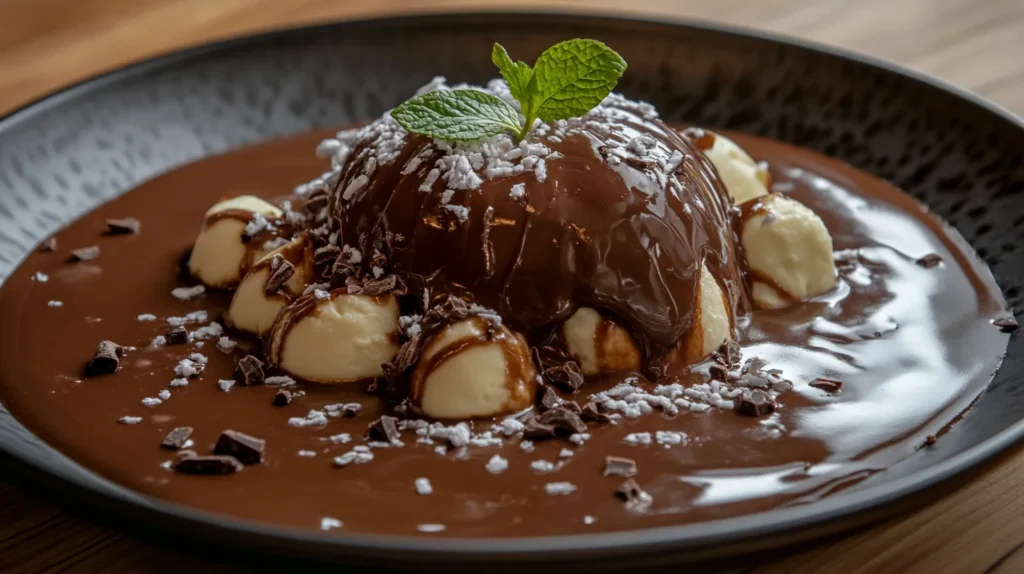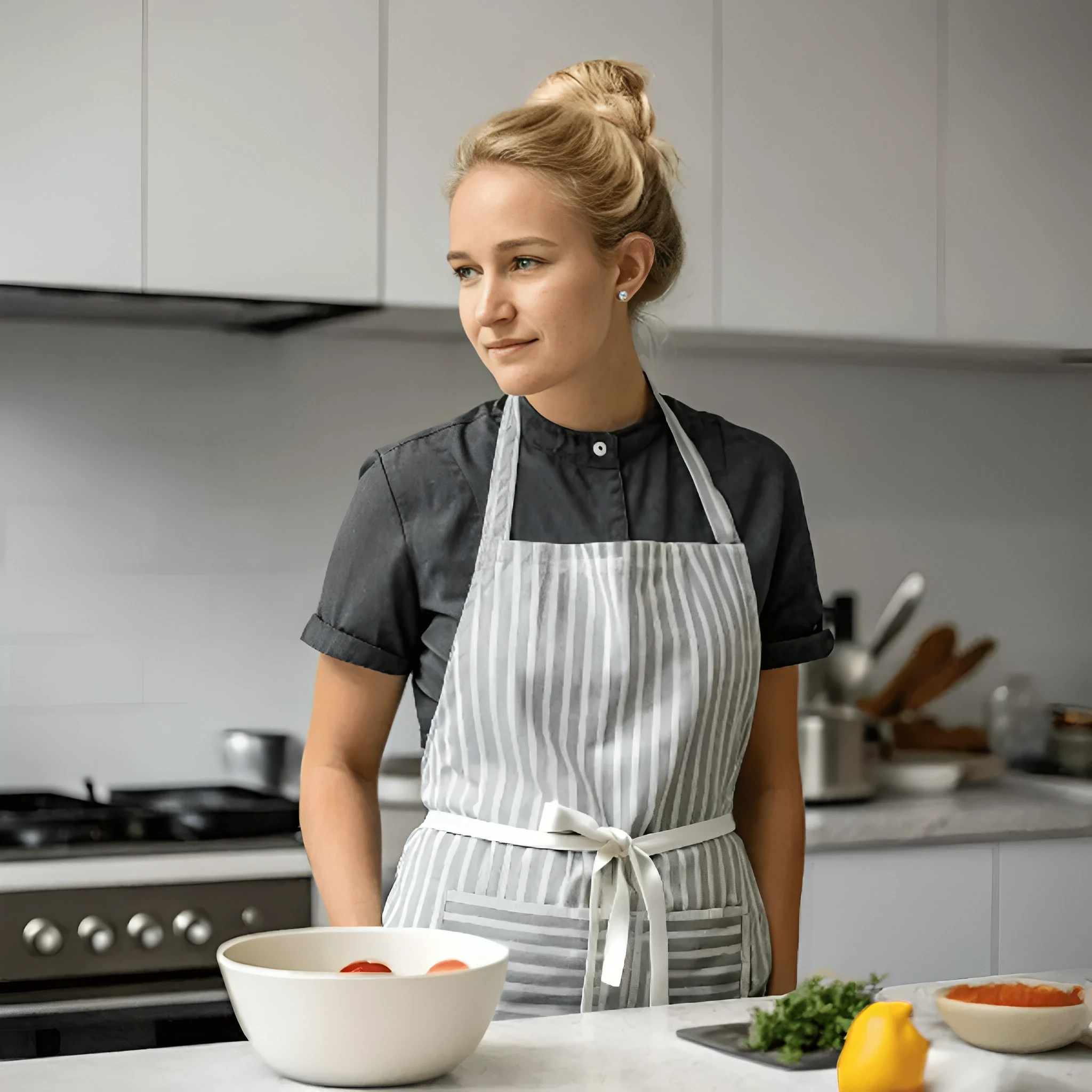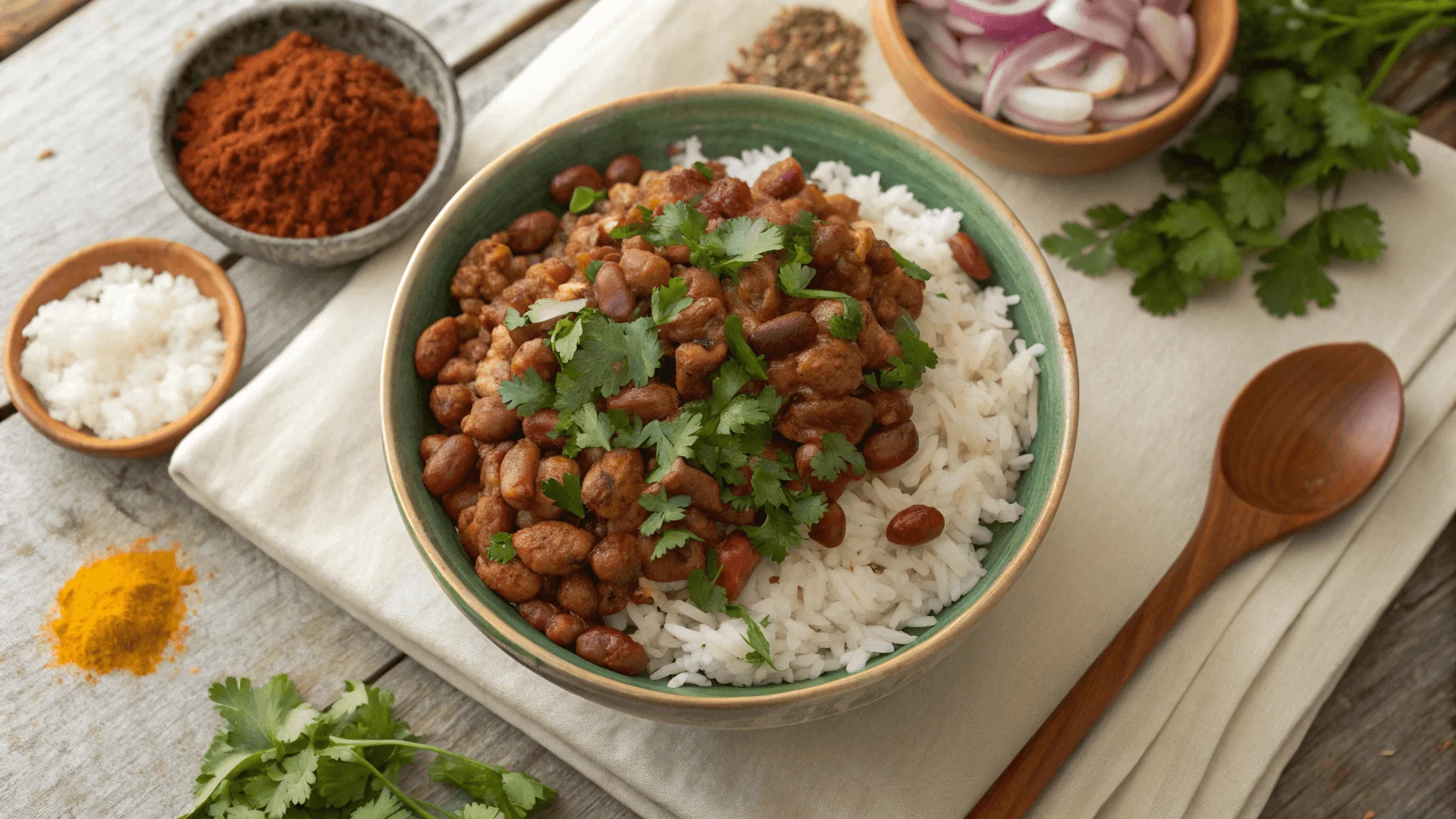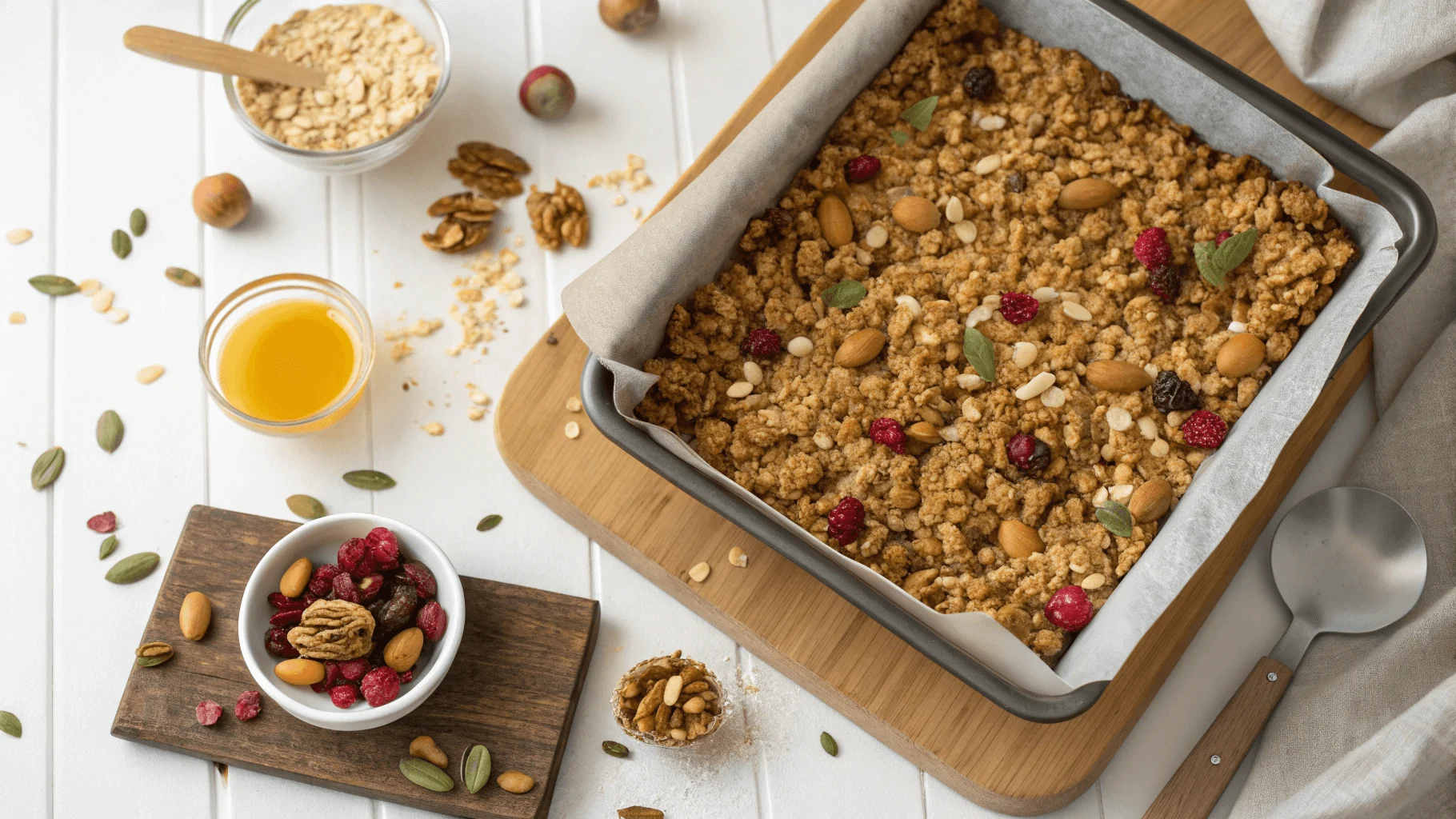Gravy is a delightful Southern treat that not only adds a rich, sweet twist to breakfast classics like biscuits or pancakes but also brings a nostalgic comfort to the table. However, achieving the perfect consistency can often be tricky and frustrating. If you find yourself wondering, “Why isn’t my chocolate gravy thickening?”, you’re certainly not alone. In fact, many home cooks face this issue at some point. Therefore, this article seeks to delve into the most common reasons behind this problem. Moreover, it will explore the science behind the thickening process and provide practical solutions to help you achieve a smooth, luscious gravy every time. By understanding the potential pitfalls and implementing these tips, you’ll be able to master this beloved dish with confidence.
What Is Chocolate Gravy? Understanding Why It Might Not Thicken
Chocolate gravy is not your typical savory sauce; rather, it’s a sweet concoction made from ingredients like cocoa powder, sugar, butter, and milk. Furthermore, its texture should be smooth, creamy, and thick enough to coat the back of a spoon effortlessly. However, achieving this consistency requires not only careful attention to the ratios of ingredients but also precise cooking techniques. Therefore, paying close attention to each step is crucial to creating a perfectly thick and luscious chocolate gravy.
Unlike traditional gravies, chocolate gravy relies on starch or flour for thickening rather than fats from meat drippings. This difference in composition means it reacts differently to heat and moisture, often leading to challenges in consistency. Learn more about this classic Southern dish and its magic.
Why Isn’t My Chocolate Gravy Thickening? Common Causes Explained
If your chocolate gravy isn’t thickening, consider these potential culprits:
- Improper ingredient ratios: Too much liquid or not enough thickening agents can lead to runny gravy.
- Inadequate cooking time: Thickening requires patience; rushing the process might leave you with a thin sauce.
- Low-quality cocoa powder: Some cocoa powders don’t dissolve well, preventing proper thickening.
- Insufficient starch or flour: If you don’t add enough flour or cornstarch, the gravy won’t reach the desired thickness.
- Overheating: Excessive heat can break down the thickening agents, leaving the gravy watery.
By addressing these factors, you can pinpoint why your chocolate gravy isn’t achieving the silky texture you desire. Explore the ultimate guide to perfect chocolate gravy for more insights into balancing ingredients.
How Ingredients Impact Chocolate Gravy Consistency
Every ingredient in chocolate gravy serves a unique purpose:
- Cocoa powder: Provides the rich chocolate flavor. High-quality, unsweetened cocoa works best.
- Sugar: Balances bitterness and adds sweetness.
- Milk or cream: Acts as the liquid base; whole milk yields a creamier consistency.
- Butter: Adds richness and helps create a smooth texture.
- Flour or cornstarch: The primary thickening agent. Using the wrong amount can lead to thin or overly thick gravy.
Understanding the interaction between these ingredients is therefore essential for diagnosing why your chocolate gravy isn’t thickening. Moreover, it helps identify potential imbalances or missteps in the recipe. Ultimately, this knowledge equips you to troubleshoot effectively and achieve the desired consistency with confidence.
Troubleshooting: Why Isn’t My Chocolate Gravy Thickening?
When faced with thin chocolate gravy, try these troubleshooting tips:
- Check the ratio of thickening agents: Add a teaspoon of flour or cornstarch mixed with cold water or milk to the gravy.
- Increase cooking time: Simmer the mixture over low heat while stirring constantly.
- Adjust heat levels: Maintain medium heat; high heat can cause the gravy to separate.
- Incorporate butter gradually: Adding butter too quickly may prevent the mixture from thickening.
- Test alternative thickeners: If flour or cornstarch fails, try arrowroot powder or tapioca starch.
These steps can help resolve consistency issues and ensure your chocolate gravy thickens as intended.
Avoid These Common Mistakes When Making Chocolate Gravy
To prevent consistency problems, avoid these common errors:
- Skipping the sifting process: Sift cocoa powder and flour to prevent lumps.
- Overloading on liquid: Adding too much milk at once can make it difficult to thicken the gravy later.
- Neglecting constant stirring: This step ensures even heating and prevents scorching.
- Using the wrong type of flour: All-purpose flour works best; self-rising flour may alter the texture.
- Ignoring the importance of timing: Adding ingredients in the wrong order can result in uneven thickening.
By sidestepping these pitfalls, you’ll be less likely to wonder, “Why isn’t my chocolate gravy thickening?”
Why Isn’t My Chocolate Gravy Thickening? Best Practices to Follow
For consistently thick and luscious chocolate gravy, follow these best practices:
- Pre-mix dry ingredients: Combine cocoa powder, sugar, and flour before adding liquids to ensure even distribution.
- Use a whisk: Whisking prevents clumps and creates a smoother texture.
- Add liquids slowly: Gradually incorporate milk while stirring to control the consistency.
- Simmer, don’t boil: High heat can compromise the thickening process.
- Taste and adjust: Balance flavors by tweaking sugar or cocoa levels as needed.
Implementing these tips will elevate your chocolate gravy to professional-level perfection.
External Recipes and Additional Resources for Chocolate Gravy
For more inspiration and guidance, check out these trusted recipes:
- Southern Living’s Chocolate Gravy Recipe: A classic take on this Southern staple.
- Allrecipes’ Chocolate Gravy Guide: Features step-by-step instructions and tips.
- Food Network’s Chocolate Gravy Tips: Offers creative ways to customize the dish.
Exploring these resources can provide additional insight into why your chocolate gravy isn’t thickening and how to perfect it.
Why Chocolate Gravy Consistency Differs From Other Gravies
Unlike traditional gravies, which often rely on meat drippings and savory seasonings, chocolate gravy uses sweet ingredients and starch-based thickeners. While the thickening process is similar, the flavor profile and consistency expectations are entirely different.
The lack of natural fats in chocolate gravy, therefore, means you must rely heavily on both careful measurement and precise technique. Consequently, every ingredient and step plays a more significant role in achieving the right consistency. Unlike traditional gravies, which often thicken effortlessly due to their fat content, chocolate gravy depends entirely on starches or flours to reach its desired texture. As a result, even small missteps can lead to a runny or uneven sauce. This unique composition, in turn, is often the primary reason behind common questions like, “Why isn’t my chocolate gravy thickening?”
The Science of Thickening Chocolate Gravy
The thickening process hinges on the gelatinization of starch molecules. When flour or cornstarch is heated with liquid, the molecules absorb water, swell, and create a viscous texture. However, this process requires precise temperatures and consistent stirring.
Failing to reach the optimal temperature can result in a thin gravy. Similarly, overheating can break down the starch, reversing the thickening effect. Understanding this science can help you troubleshoot any consistency issues effectively.
Alternative Ingredients to Thicken Chocolate Gravy
If traditional chocolate gravy isn’t thickening to your liking, consider experimenting with these alternative ingredients:
- Arrowroot powder: Offers a glossy finish and works well at lower temperatures.
- Tapioca starch: Creates a silky texture and thickens quickly.
- Coconut milk: Adds a creamy, tropical twist.
- Sweetened condensed milk: Acts as both a sweetener and a thickener.
These ingredients can add variety to your chocolate gravy while ensuring it thickens properly.
Cultural Significance of Chocolate Gravy
Chocolate gravy has deep roots in Southern American cuisine, particularly in Appalachia. It’s a beloved comfort food passed down through generations, often associated with family breakfasts and celebrations.
- Historical Origins: Likely influenced by European settlers, chocolate gravy evolved in regions where cocoa became accessible.
- Regional Variations: Some families add hints of vanilla or cinnamon for a unique twist.
- Symbolism: Beyond its taste, it represents heritage and tradition, making it a nostalgic dish for many.
By understanding its cultural background, therefore, you’ll appreciate chocolate gravy not just as a recipe but as a tradition worth preserving. Moreover, this knowledge deepens your connection to its origins and significance. Ultimately, it allows you to honor and celebrate a rich culinary heritage while enjoying its delicious flavors.
Pairing Chocolate Gravy with Different Dishes
The versatility of chocolate gravy allows it to shine alongside various dishes, creating a perfect balance of sweet and savory.
- Classic Pairings:
- Warm biscuits for a traditional Southern breakfast.
- Pancakes or waffles for a rich, chocolatey twist.
- Savory Pairings:
- Fried chicken for an adventurous combination of flavors.
- Bacon or sausage to create a sweet and salty contrast.
- Dessert Options:
- Drizzle over ice cream, brownies, or sponge cake for an indulgent treat.
Experimenting with pairings, therefore, helps you discover new ways to enjoy this iconic sauce. Additionally, it allows you to tailor the dish to different tastes and occasions. As a result, you can expand your culinary repertoire and enhance your overall dining experience.
Why Isn’t My Chocolate Gravy Thickening? How to Store and Reheat It Properly
Storing and reheating chocolate gravy correctly is key to maintaining its texture and flavor.
- Storage Tips:
- Store leftover gravy in an airtight container in the refrigerator for up to 5 days.
- Avoid freezing, as the texture can become grainy.
- Reheating Instructions:
- Use a saucepan on low heat, stirring frequently to avoid burning.
- Add a splash of milk or water if the gravy becomes too thick.
- Avoid microwaving, as uneven heating can compromise consistency.
Proper handling, therefore, ensures your chocolate gravy remains smooth and delicious for future use. Moreover, it helps maintain its texture and flavor, preventing any unwanted changes during storage. As a result, you can enjoy the same high-quality gravy even after reheating.
Creative Twists on Traditional Chocolate Gravy Recipes
Chocolate gravy is a classic, but adding a creative spin can elevate it to the next level.
- Infused Flavors:
- Add orange zest for a citrusy kick.
- Mix in espresso powder for a mocha-inspired gravy.
- Healthier Options:
- Substitute traditional sugar with honey or maple syrup.
- Use almond or oat milk for a dairy-free version.
- Gourmet Variations:
- Incorporate dark chocolate for a richer taste.
- Top with crushed nuts, fresh fruit, or whipped cream.
These ideas, in turn, add variety and sophistication to the timeless recipe. Additionally, they provide opportunities to customize the dish to suit different tastes and occasions. Ultimately, incorporating these creative twists can elevate a classic favorite to new culinary heights.
The Role of Cocoa Quality in Why Your Chocolate Gravy Isn’t Thickening
The quality of cocoa you use significantly impacts the texture and flavor of your chocolate gravy.
- Why it Matters:
- High-quality cocoa dissolves more smoothly, preventing lumps.
- Poor-quality cocoa may lead to a grainy texture.
- What to Look For:
- Opt for unsweetened cocoa powder with minimal additives.
- Dutch-processed cocoa creates a darker, smoother gravy.
- Troubleshooting:
- Why isn’t my chocolate gravy thickening? Low-quality cocoa or incorrect ratios could be the culprit. Adjust with more flour or cornstarch as needed.
Investing in good cocoa powder, therefore, ensures a luxurious result every time. Furthermore, it enhances the overall texture and flavor of your chocolate gravy. Ultimately, this small choice can make a significant difference in achieving a professional-quality dish.
Exploring Different Types of Sweet Gravies
Chocolate gravy isn’t the only sweet gravy to explore. Broaden your culinary horizons with these alternatives:
- Caramel Gravy:
- Perfect for pancakes or bread pudding.
- Vanilla Sauce:
- A light, creamy option for cakes or fruit desserts.
- Fruit-Based Gravies:
- Made with berries or apples for a naturally sweet twist.
Understanding these variations, therefore, highlights the diversity of sweet gravies in global cuisine. Moreover, it allows for greater appreciation of regional culinary traditions and inspires creativity in experimenting with new flavors. As a result, you can expand your culinary repertoire and elevate your dishes with unique sweet gravy options.
Essential Tools for Making the Perfect Chocolate Gravy
Using the right tools ensures your chocolate gravy turns out smooth and delicious.
- Whisk: Prevents lumps and creates a creamy texture.
- Non-Stick Saucepan: Reduces the risk of scorching.
- Measuring Cups and Spoons: Ensures precise ratios for consistency.
- Sieve: Useful for sifting cocoa powder to avoid clumps.
- Silicone Spatula: Ideal for scraping every bit of gravy from the pan.
Having these tools on hand, therefore, makes it significantly easier to master the art of chocolate gravy. In addition, they ensure consistency and simplify the preparation process, ultimately helping you achieve professional-quality results.
Step-by-Step Guide to Achieving the Perfect Consistency
Follow this method to ensure your chocolate gravy is thick and luscious every time.
- Combine Dry Ingredients:
- Mix flour, sugar, and cocoa powder thoroughly.
- Add Wet Ingredients:
- Gradually whisk in milk to create a smooth mixture.
- Cook Over Medium Heat:
- Stir continuously to avoid lumps.
- Adjust for Thickness:
- If your gravy is too thin, add a slurry of flour and water.
- Why isn’t my chocolate gravy thickening? You may need to cook it longer to allow the starches to activate.
Consistency depends on proper technique, so patience is key. For further inspiration, delve into the sweet history of chocolate gravy, which highlights its cultural significance.
FAQs: Solving Issues Like Why Isn’t My Chocolate Gravy Thickening?
Can I make chocolate gravy without flour?
Yes, you absolutely can! For a gluten-free alternative, you can substitute flour with cornstarch or arrowroot powder.
In addition to being gluten-free, these thickeners are effective at creating a smooth, creamy texture. Furthermore, they require less quantity than flour, making them a lighter option. As a result, you’ll achieve the same delicious consistency without compromising on flavor or dietary needs.
Why isn’t my chocolate gravy thickening?
This issue commonly arises from insufficient cooking time, improper ingredient ratios, or the use of low-quality cocoa powder. To address this problem effectively, ensure you are stirring continuously, as this helps prevent lumps and activates the thickening agents.
Moreover, allow enough heat to bring the mixture to the right temperature. If the heat is too low, the thickening agents won’t work, and if the ratio of liquid to dry ingredients is off, the gravy might remain runny. Therefore, careful adjustments and patience can usually resolve the issue.
How can I fix lumpy chocolate gravy?
To fix lumpy chocolate gravy, strain it through a fine mesh sieve. This step removes any solid clumps and creates a smoother base. After straining, whisk the mixture vigorously to further smooth it out.
4. Is chocolate gravy served hot or cold?
Traditionally, chocolate gravy is served warm, which enhances its rich, velvety texture and allows it to pair beautifully with freshly baked biscuits or pancakes. However, if you’re looking for a versatile twist, you can also serve it chilled.
When cooled, the gravy takes on a thicker, more pudding-like consistency, making it an excellent topping for ice cream or a filling for pastries. Ultimately, whether you serve it hot or cold depends on your personal preference and how you intend to use it.
Conclusion
Chocolate gravy is more than just a sauce—it’s a cultural icon, a culinary experiment, and a truly delightful treat. Moreover, its unique blend of sweetness and texture makes it a standout addition to any meal. From its origins in Southern kitchens to modern adaptations, understanding the factors that influence its consistency is crucial. When faced with challenges like, “Why isn’t my chocolate gravy thickening?”, knowing how to troubleshoot can save the dish and elevate your cooking skills. Whether you’re aiming to recreate a traditional recipe or experiment with creative twists, chocolate gravy remains a versatile and cherished favorite. In addition, its adaptability ensures it continues to find a place on tables across the world.






3 thoughts on “Why Isn’t My Chocolate Gravy Thickening? Tips, Causes, and Solutions”